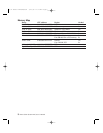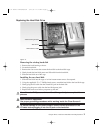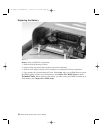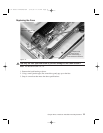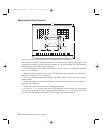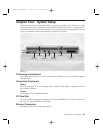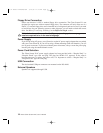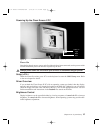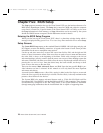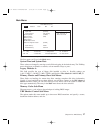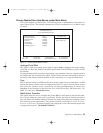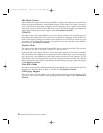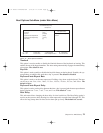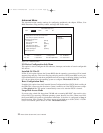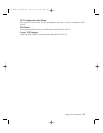
Chapter Five: BIOS Setup
The Setup program customizes the way the Clean Screen II PC uses the hardware features of its
BIOS (Basic Input/Output System). The Setup data is stored in CMOS and guides the computer
every time it is turned on. A special feature of the Clean Screen II PC is its ability to also store
the Setup information in flash memory, so Setup information can be recovered by the system
should the CMOS become corrupted. See the Exit menu section for details.
Entering the BIOS Setup Program
When you first boot up the Clean Screen II PC, there is a short-time window during which a
message is displayed telling you to Press F2 to enter Setup. Press and hold <F2> to enter Setup.
Setup Screens
The System BIOS Setup menus are the standard Phoenix NuBIOS 4.06 (with plug-and-play and
PCI support) screens with RadiSys extensions. A legend at the bottom of each screen provides
information for the user to manipulate setup options.
Use the up and down arrow keys to move the cursor from field to field, and the right and left
arrows to move from menu to menu. If the arrow keys are used to leave a menu and then return,
the active field is always at the beginning of the menu. Fields with a triangle to the left are
sub-menu headings; pressing <enter> when the cursor rests on one of these headings opens that
sub-menu. Within the sub-menu, most fields allow the user to flip through available choices by
pressing the <+> and <-> keys. Once the desired entry has been selected, use the up or down
arrow to move the cursor to the next field.
There are four menus: Main, Advanced, Power, and Exit. Note that item specific Help is pro-
vided whenever an item is selected. In this manual we will only detail the more important
sub-menus and choices.
Accessed from the Main screen, a Boot Delay option is added to the Boot Options screen and
allows the User to specify the boot delay in seconds. The Boot Delay is the only mechanism that
prevents a boot failure on slow devices.
The System BIOS also supports advanced features such as 32-bit disk I/O, Block and Fast
Programmed I/O, Ultra DMA/33, and the Intel/Microsoft INT13 disk extensions. These features
are automatically configured in the IDE setup menus if the System BIOS has determined
(through autotyping information) that the installed hard disk is capable of supporting them.
16 Planar Clean Screen II PC User’s Manual
CS II Manual LAYOUT#2304 3/25/99 11:16 AM Page 16



